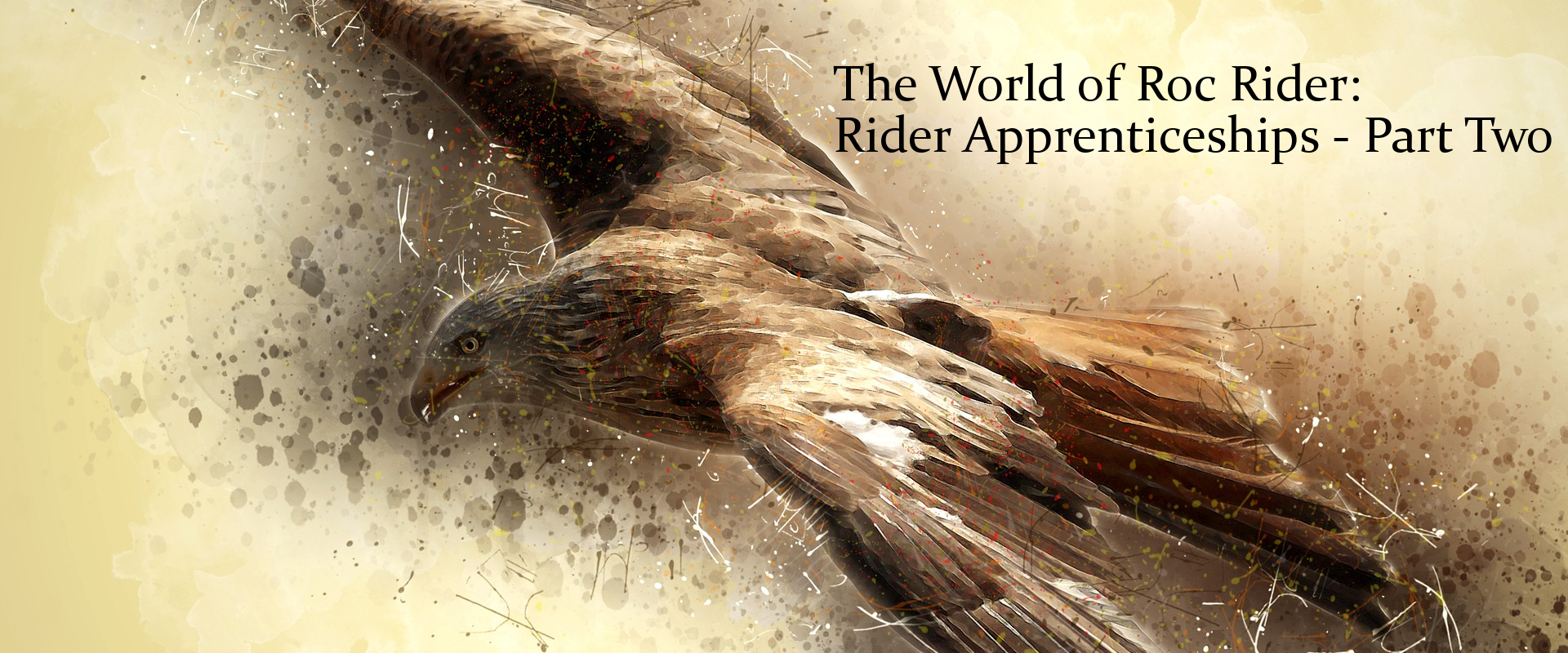In this second installment of this blog series, we continue to explore how a young person becomes a warrior of the sky, able to strap themselves to the backs of rocs and fly into combat without fear or hesitation. If you missed the first part of this series, read it here.
Guarding Nests
After their year of learning how to earn the respect of a roc and caring for their master’s mount day in and day out, the young apprentice is ready to take the next step on their training. For before one can take to the sky, one must learn as much as they can about the majestic rocs. Masters long ago realized that the best way for an apprentice to learn is to raise a hatchling of their own.
If the master’s roc is female, often she will lay a clutch of eggs around the time for the apprentices to raise their own hatchlings. Many roc riders time the taking on of an apprentice to coincide with their mount’s mating cycle, whenever possible. For those who ride male rocs, or whose female is beyond her breeding years, other accommodations are made. Often another rider is able to provide eggs, though some masters choose to have their apprentices go out into the wild and take a wild egg from a nest. The practice of acquiring a wild egg is usually frowned upon as being unnecessarily dangerous, though.
Roc eggs show distinct differences depending on if they are male or female. Male eggs are smaller, much like the adults they hatch into, and rounder. Female eggs are larger and more oblong, like a chicken egg. Apprentices are usually assigned eggs based on the gender of the chick inside.
Male apprentices are usually given female eggs and vice versa. The reason for this is twofold. First, as female rocs are larger they are better adapted to carry human men, who are often heavier than women. Secondly, adult male rocs can be temperamental around other males, regardless of species, and are far more easily trained by women.
Once assigned an egg, the apprentice must care for it in place of its mother. Keeping it warm, turning it, and ensuring that the nest remains safe. For most apprentices, this is an exercise in discipline indoors. Harsher masters will make their apprentices build a nest outside for their charge.
Feeding Newborns
When the hatchlings emerge, apprentices must take on most of the responsibilities of care for the baby rocs. Because a roc hatchling requires round the clock care, the master, and fellow apprentices all help with this step in the process, though the apprentice is still expected to shoulder the majority burden for the young ones care.
As roc mothers usually feed the brood by regurgitating part of their own meals, the apprentices must take pains to ensure the babies’ food is ground up enough for them to swallow and digest.
Bonding
When the hatchling reaches the age where they can walk and eat on their own, the apprentice faces the challenge of bonding with their future mount. Unlike most birds, rocs never imprint to think of themselves as human when raised by a rider instead of a mother roc. While this makes the process easier in some respects, it also means the apprentice is left to wrangle a tiny, predatory ball of feathered energy day in and day out.
One common method of bonding is to begin flying lessons early, even before all of the hatchling’s feathers have come in. An apprentice rider does this by hoisting the young bird aloft, face into the wind, and tickling the feathers beneath their wings to encourage them to flap. When the hatchling inevitably grows too large for this, the apprentice will make them watch as the master’s roc flies, so the hatchling can see how it’s done.
During this period is when the apprentice begins teaching the young roc to respond to whistles, spoken commands, and touch. The hatchling learns to change direction, stay and go where they’re told, and other tasks that lay the foundation for future training. In addition, many apprentices find it entertaining to train their young raptors to dance, hop on one leg, or other silly things. These extra commands are actually encouraged by masters, as it helps teach the young rocs to listen to their future riders.
These early commands are a vitally important component of training, for a roc who has not mastered obeying their rider by the time of their first flight becomes exceptionally difficult to train thereafter. While it can be done, most riders find it a more responsible choice to release the young roc into the wild rather than attempt to continue training. Most apprentices who fail at this step are let go and never become riders. Though, on rare occasion, some are given the opportunity to try again with a new egg.
Keep your eyes peeled for one final installment of this blog series on rider apprenticeships. And don’t forget to sign-up for the newsletter, to be the first to know when book two arrives.


